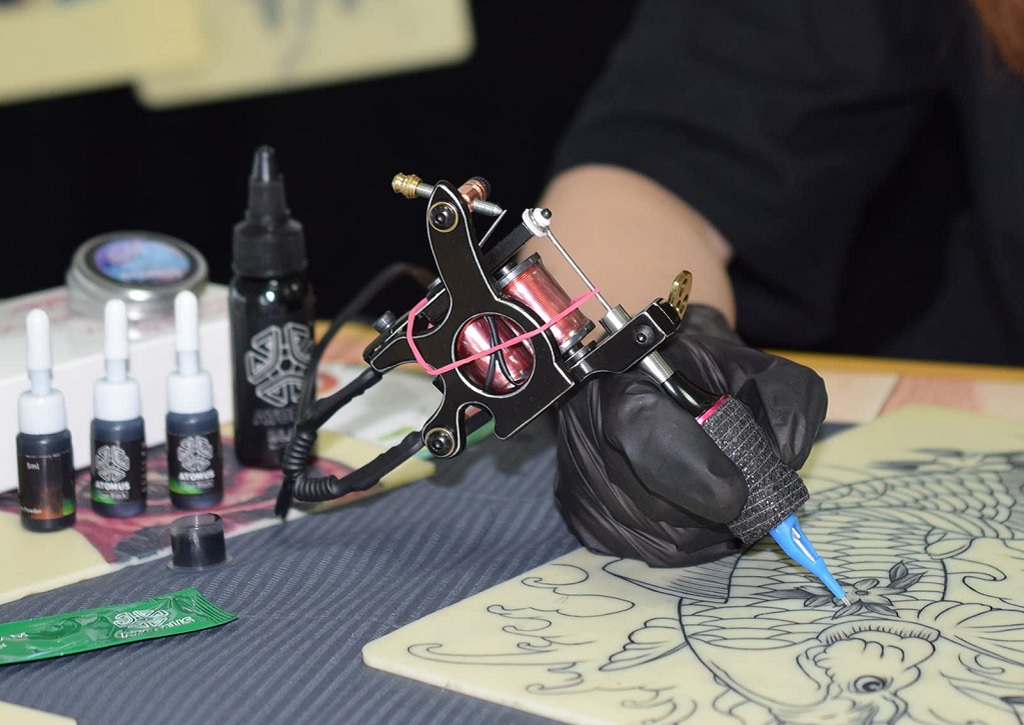Tattooing has been an art form that has captivated people for centuries. From ancient tribal markings to modern intricate designs, tattoos have evolved and become a mainstream form of self-expression. Behind every great tattoo, there is a tattoo machine, also known as a tattoo gun, that plays a crucial role in creating stunning works of body art. If you’re a beginner in the world of tattooing, understanding tattoo machines is essential. This beginner’s guide will walk you through the basics of tattoo machines, their components, and how they work.

What is a Tattoo Machine?
A tattoo machine is a handheld device used by tattoo artists to create permanent designs on the skin. It consists of various components that work together to drive tattoo needles into the skin, depositing ink and creating the desired design. Tattoo machines have come a long way from their early predecessors, and modern machines are designed for precision, efficiency, and safety.
How Tattoo Machines Work
Tattoo machines operate on the principle of electromagnetism. When the tattoo artist activates the foot pedal, it completes the circuit, sending an electrical current to the coils. The coils then become electromagnets, attracting the armature bar, which is attached to the needles. As the armature bar moves upward, it pulls the needles out of the tattoo tube, exposing them for tattooing. When the armature bar moves downward, the needles retract into the tube, allowing the artist to dip them into ink and start the process again.
Choosing the Right Tattoo Machine
It’s essential to consider factors such as your preferred tattooing style, the types of designs you plan to create, and your comfort level with different machines. Coil machines are commonly used for traditional styles, while rotary machines are known for their versatility and quieter operation. As a beginner, product selection can be difficult, you can choose the best tattoo starter kit that will have full equipment for you during the tattooing process.
How to Improve Your Tattoo Artist Skills
Improving your tattooing skills requires dedication, practice, and a commitment to continuous learning. Here are some steps you can take to enhance your tattooing abilities:
Apprenticeship: Consider finding an experienced and reputable tattoo artist who is willing to take you on as an apprentice. This hands-on training will provide you with valuable insights into the profession, including technique, hygiene practices, and client interactions.
Study Anatomy: Develop a deep understanding of human anatomy to ensure your designs and placements are anatomically accurate. Familiarize yourself with the structure, proportions, and movement of different body parts to create visually pleasing and well-executed tattoos.
Practice Drawing: Regularly practice your drawing skills to improve your ability to create detailed and intricate tattoo designs. Experiment with different styles, subjects, and techniques to expand your artistic range. You can practice on fake skin to improve your skills and use a stencil to transfer tattoos to guests to avoid unwanted mistakes. You are also wondering what pen to use for tattoo stencil, the ideal pen for tattoo stencils is called a “skin marker” or “tattoo stencil pen”. These pens are specifically formulated with non-toxic, skin-safe ink that can be safely applied to the skin. It’s important to note that using regular pens, markers, or other non-tattoo-specific products on the skin is not recommended, as they may contain chemicals or pigments that could be harmful or cause skin irritation.
Develop Tattoo Design Skills: Focus on creating original and unique tattoo designs. Study various design elements, such as line work, shading, color theory, and composition. Experiment with different mediums and digital tools to refine your design skills.
Familiarize Yourself with Tattoo Equipment: Learn about the different types of tattoo machines, needles, and other equipment used in the industry. Understand their functionalities, maintenance requirements, and how to optimize their performance.
Seek Feedback: Invite constructive criticism from fellow tattoo artists and clients to help you identify areas for improvement. Actively seek feedback on your work and be open to suggestions and new perspectives.
Conclusion
Remember, practice, patience, and dedication are key to mastering the art of tattooing, and a reliable tattoo machine will be your faithful companion along the way.